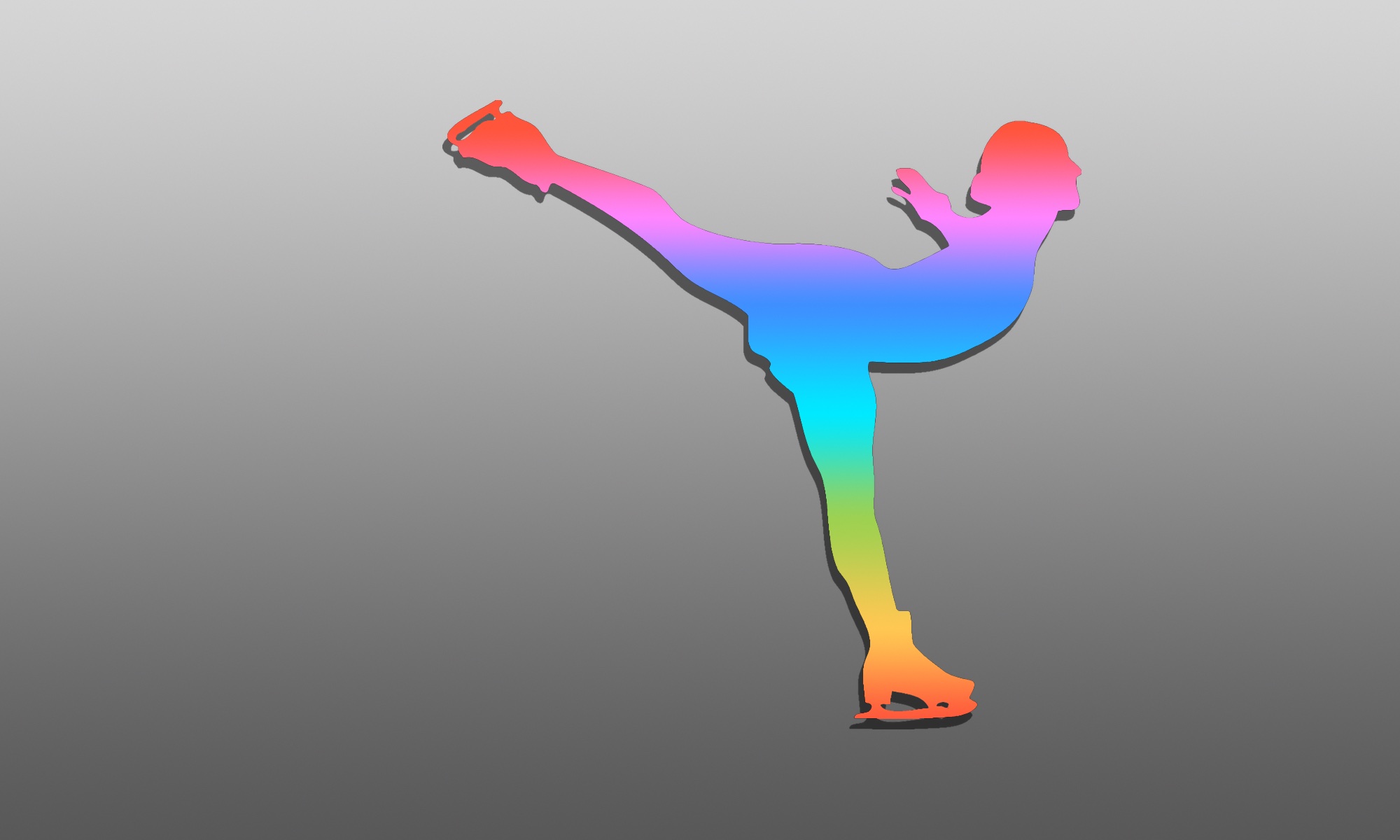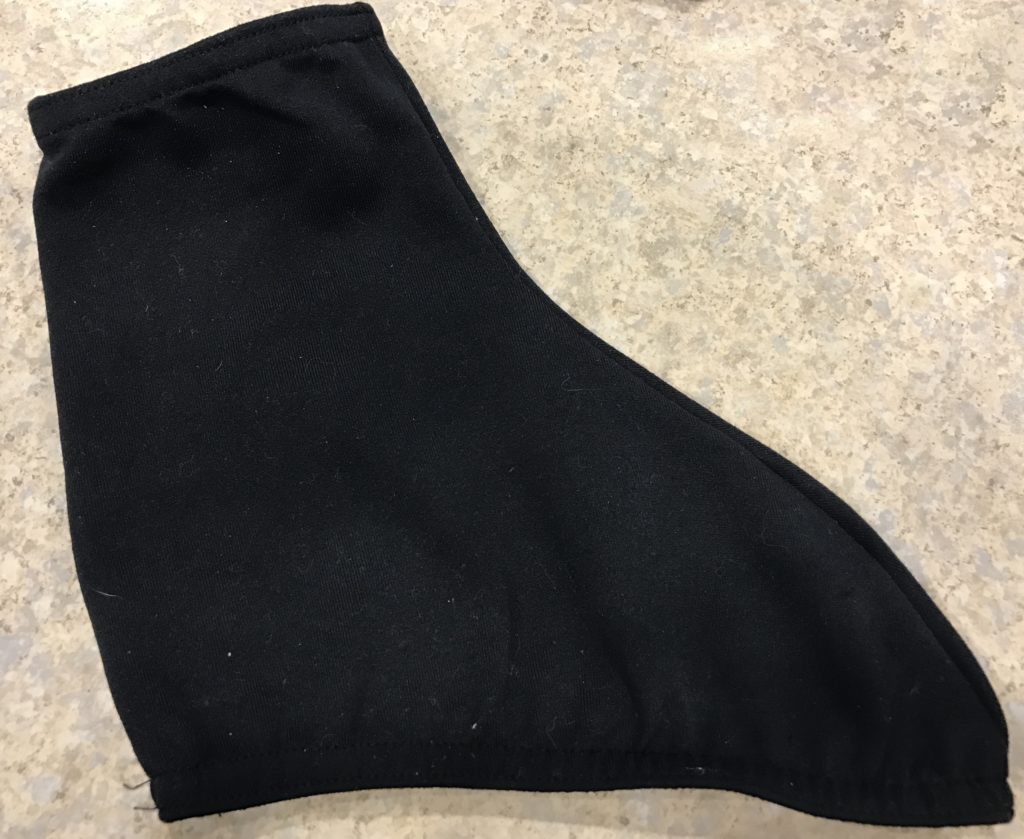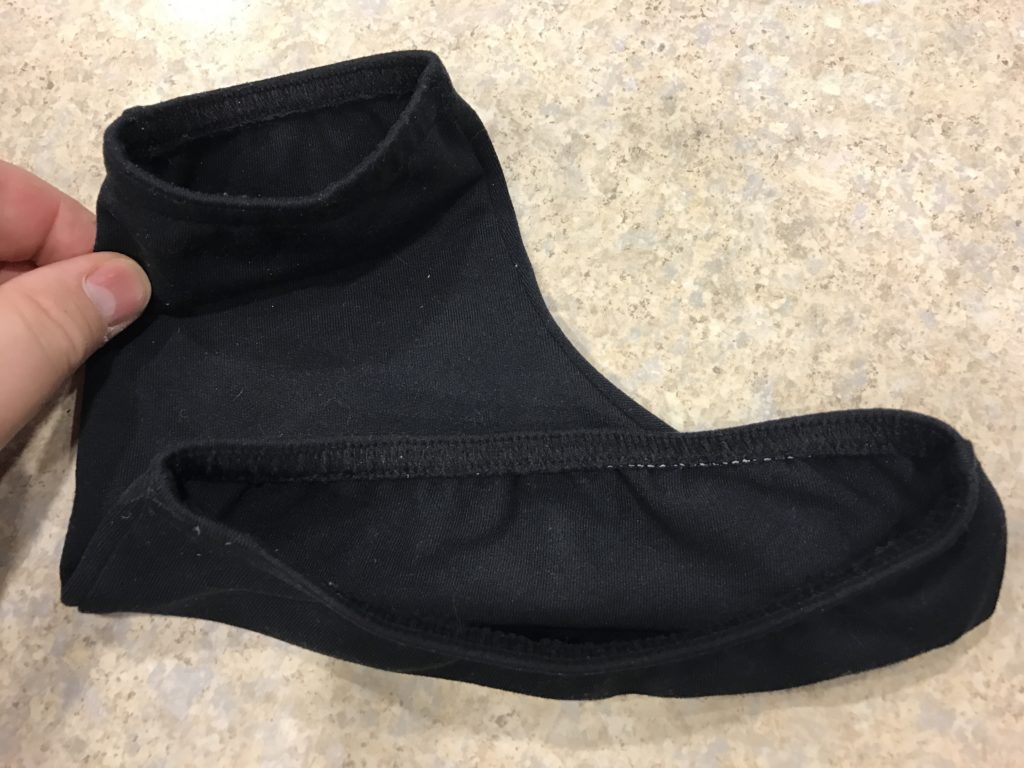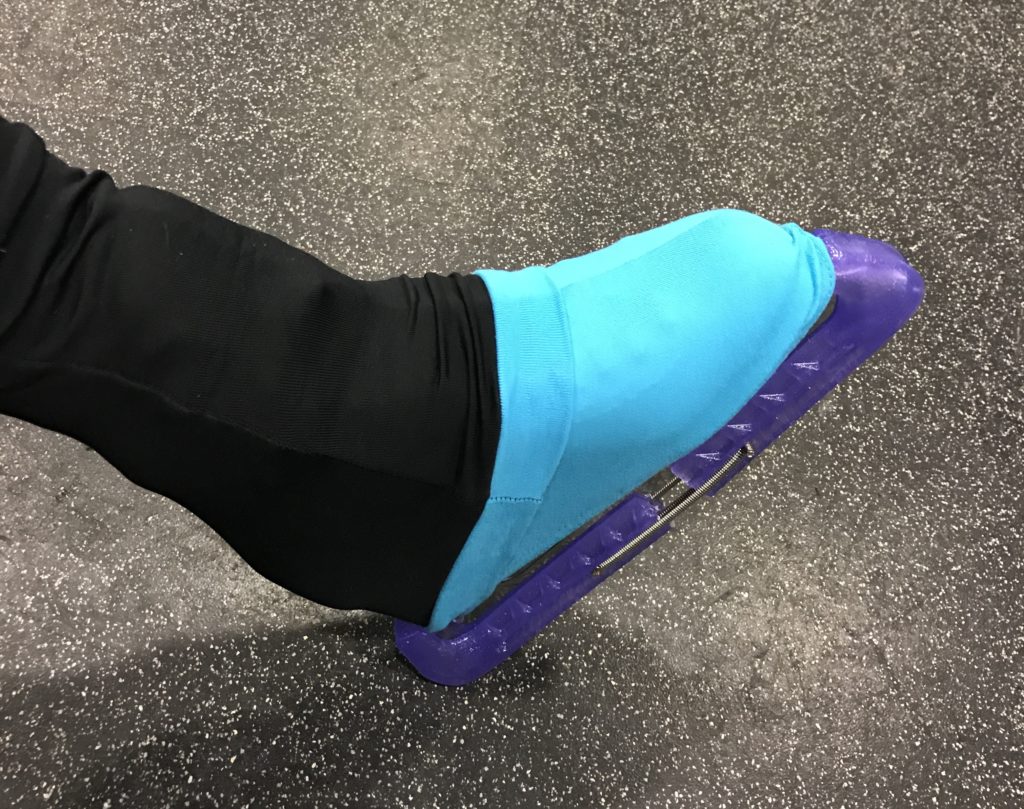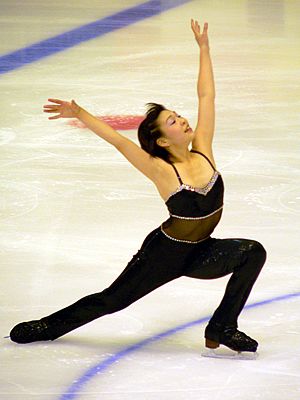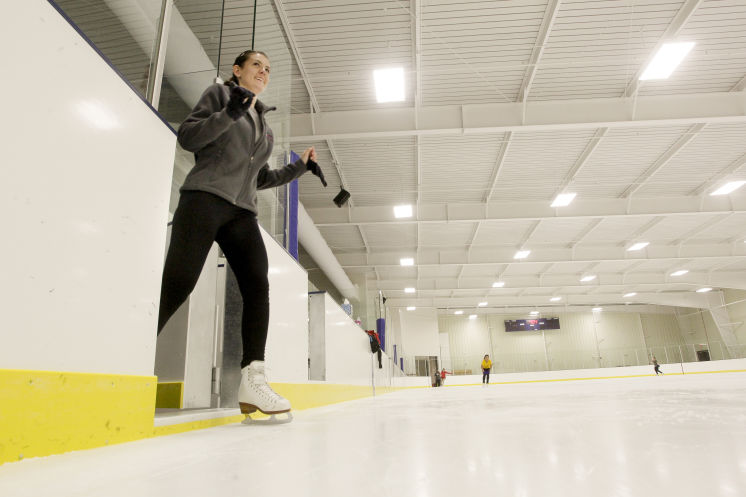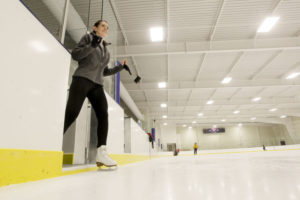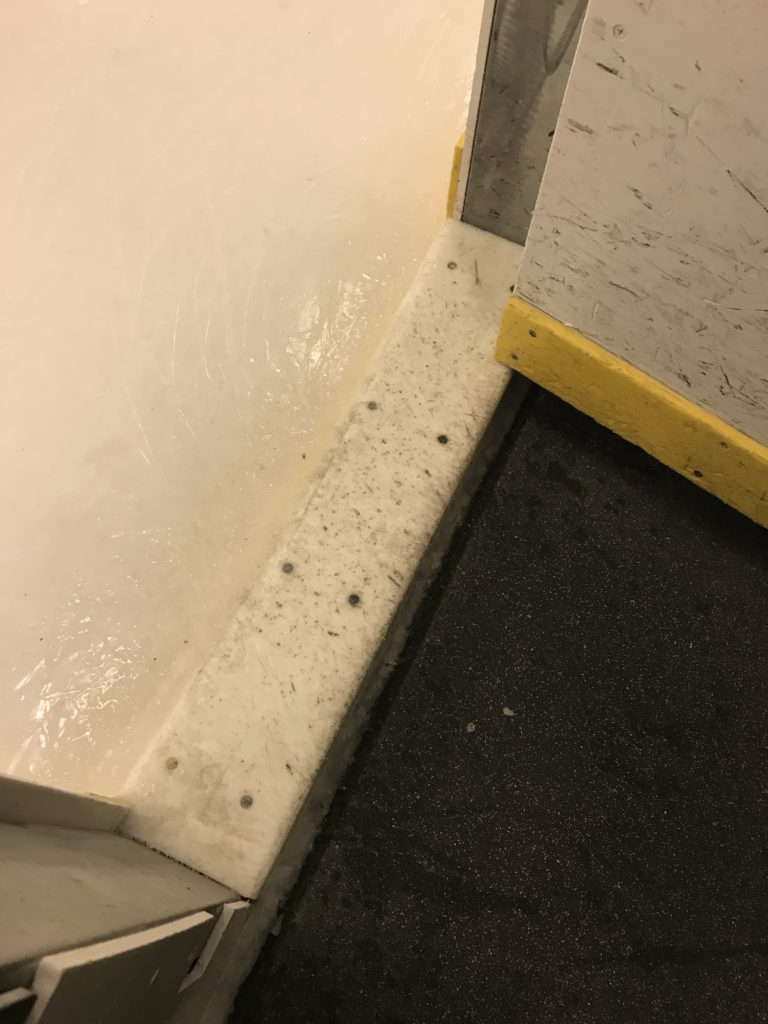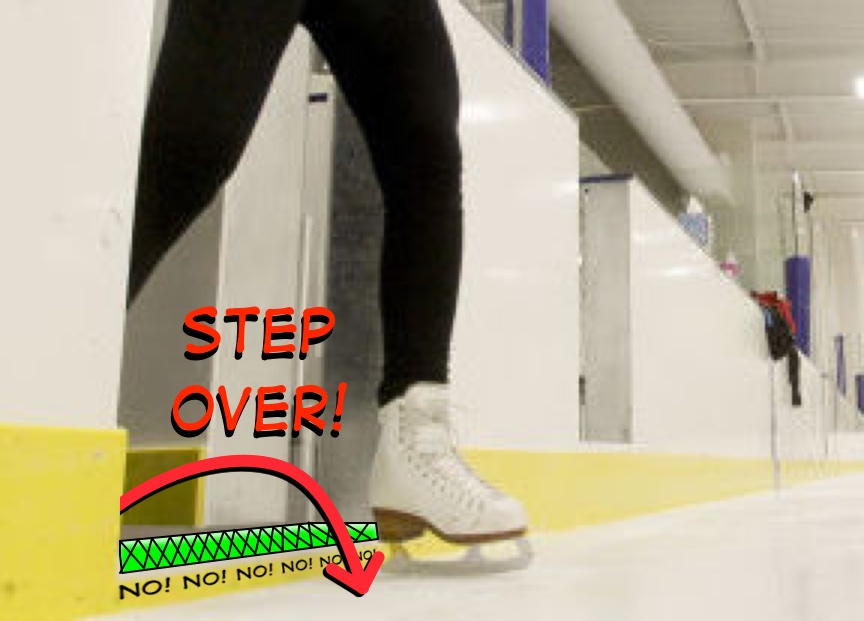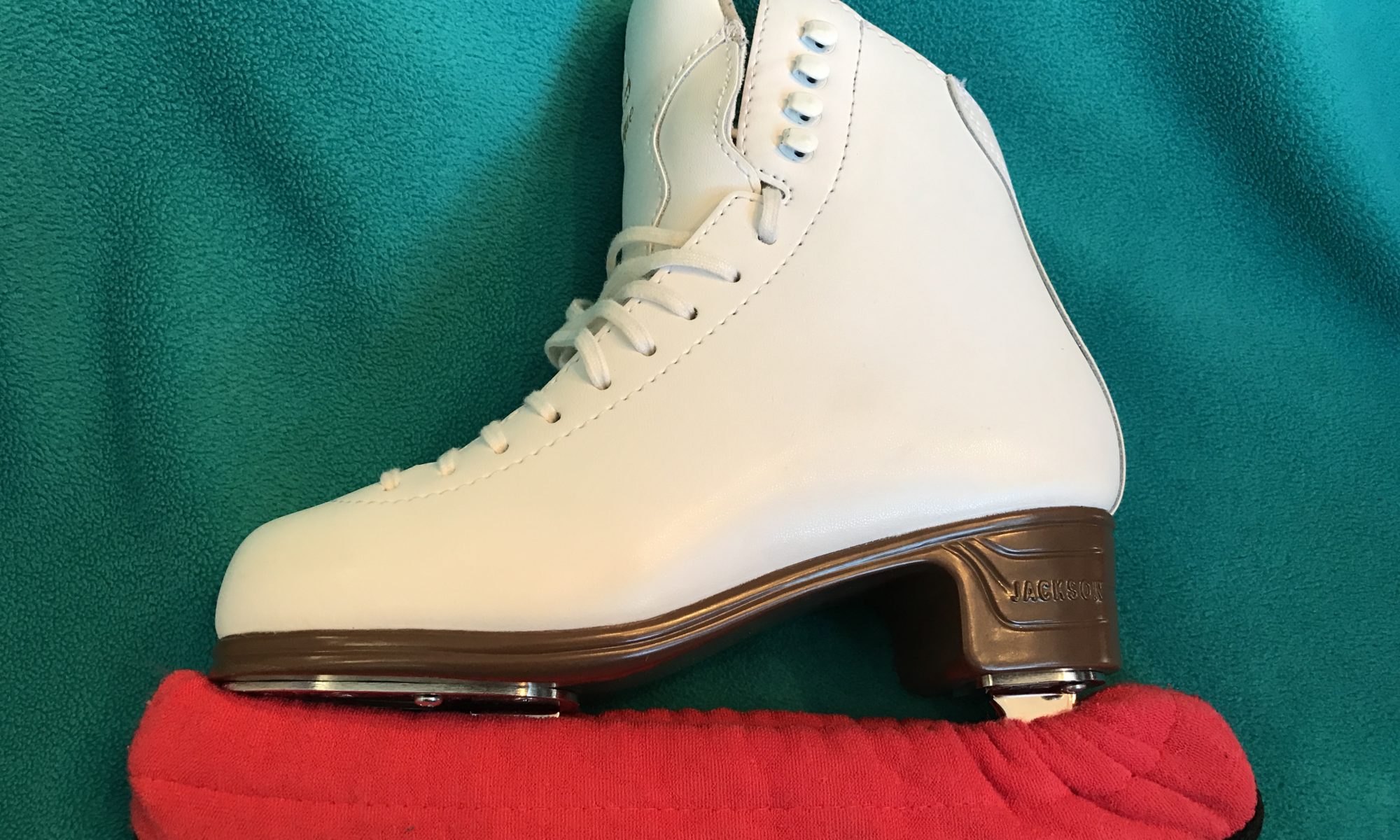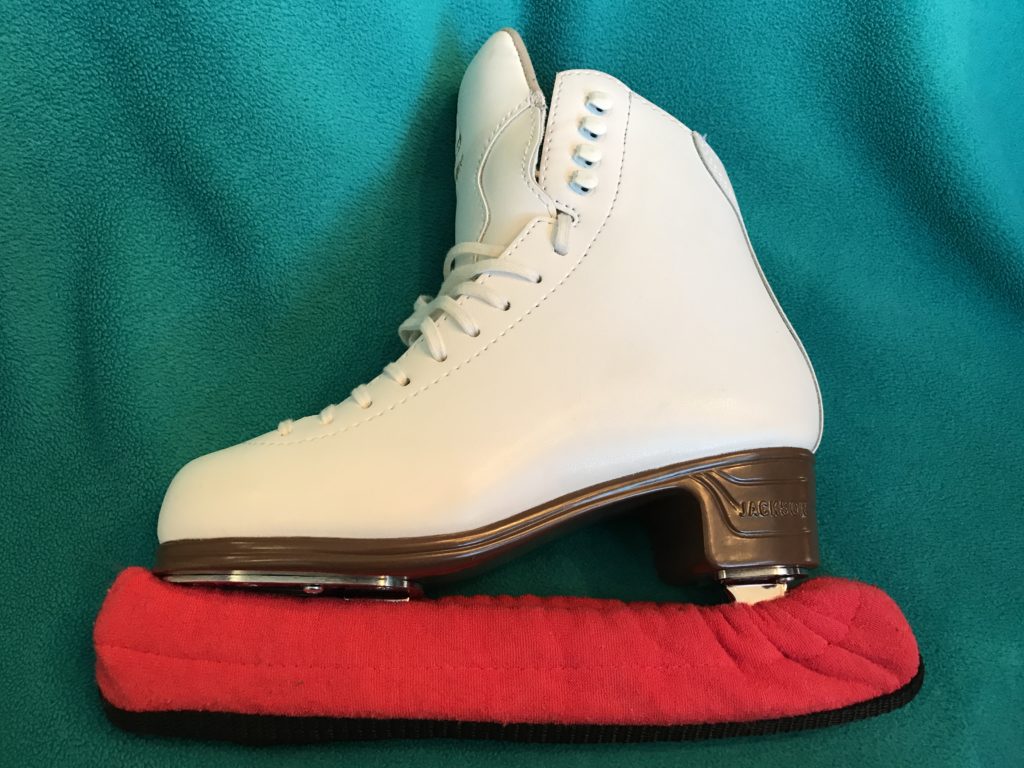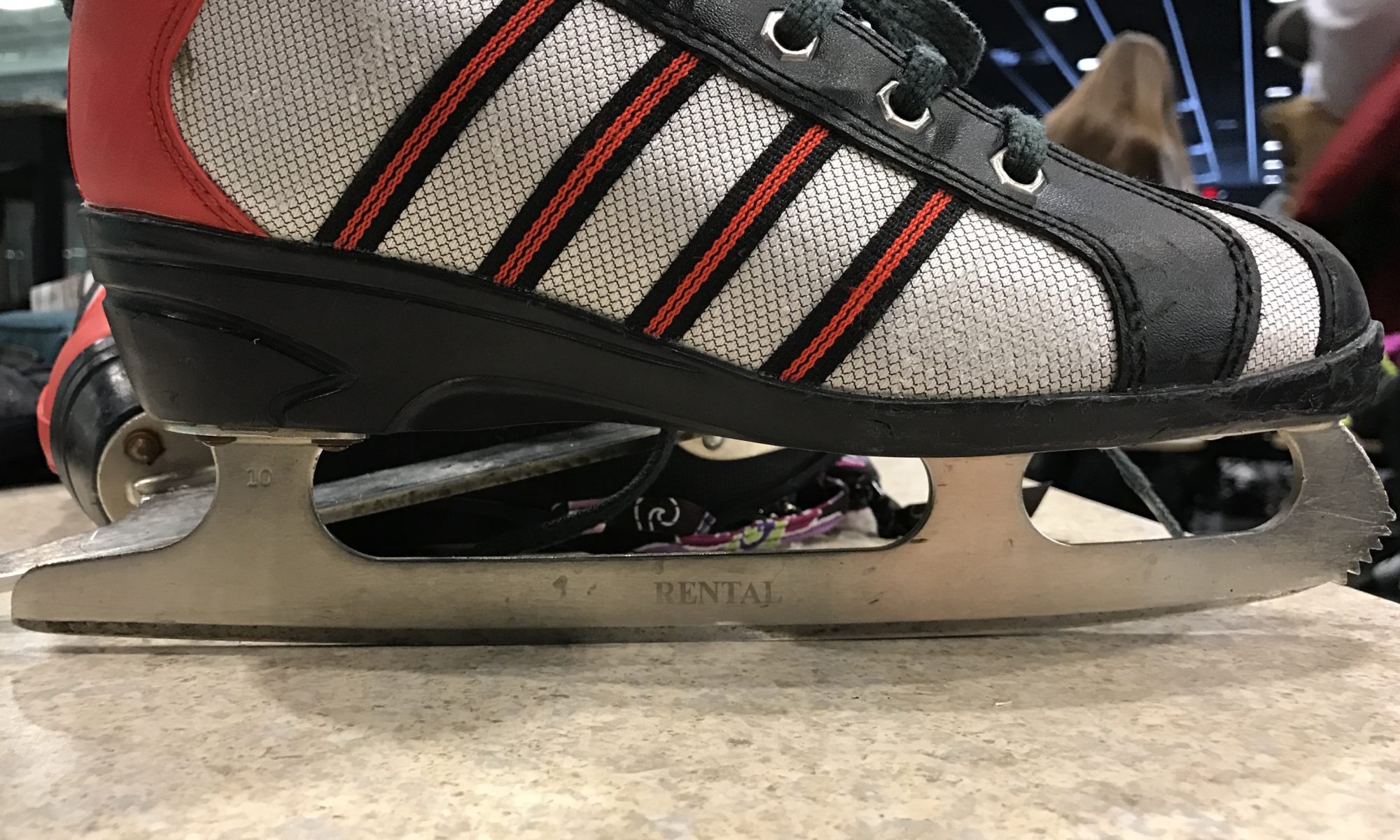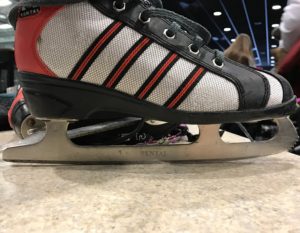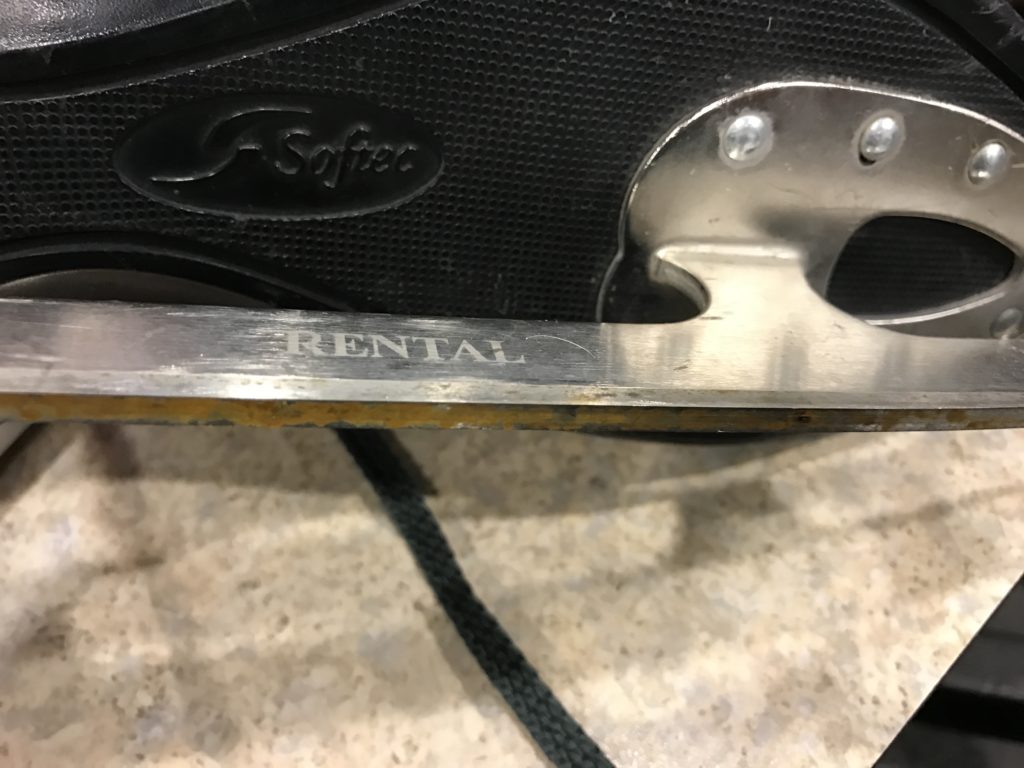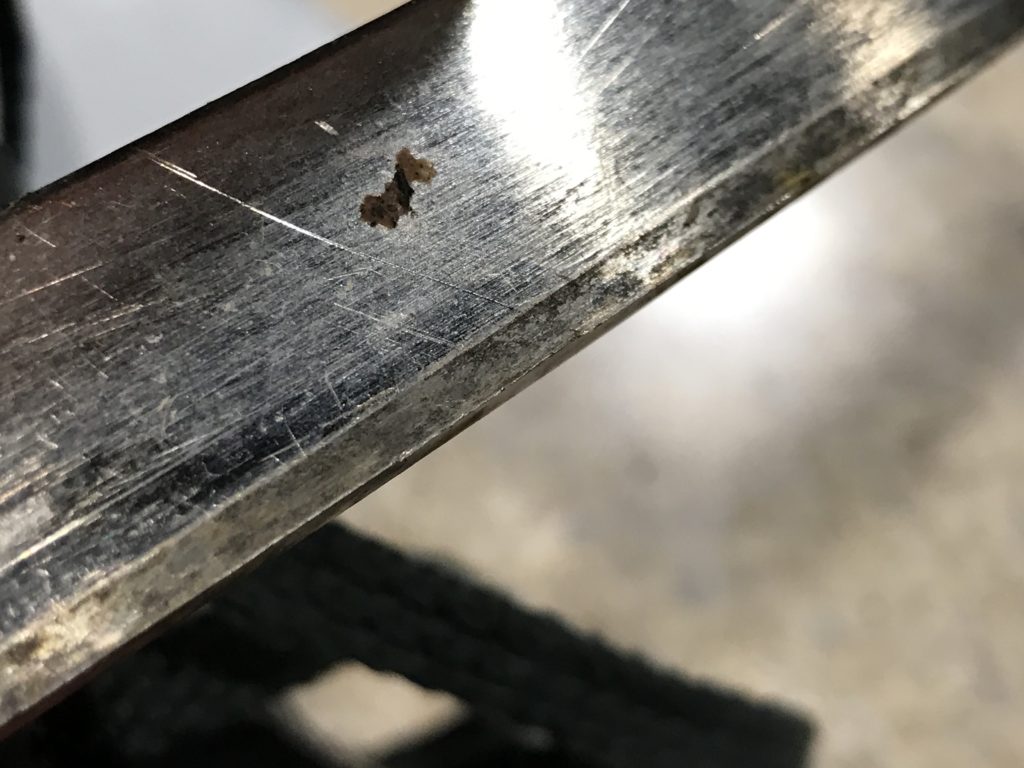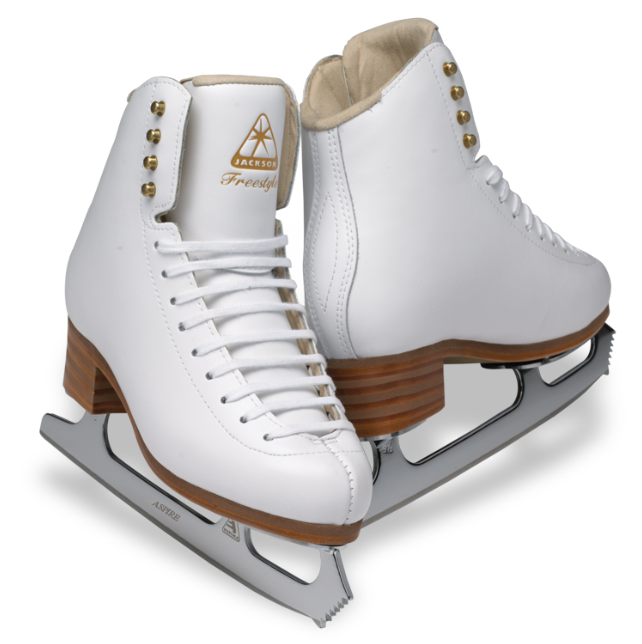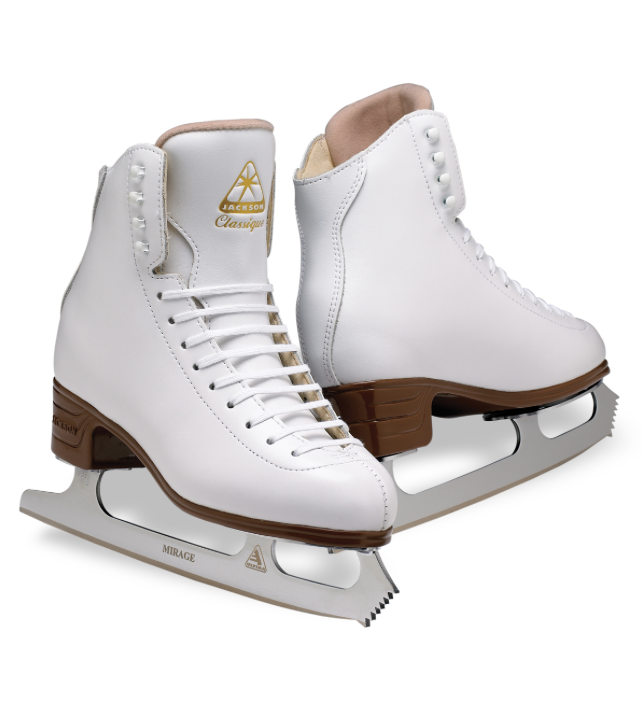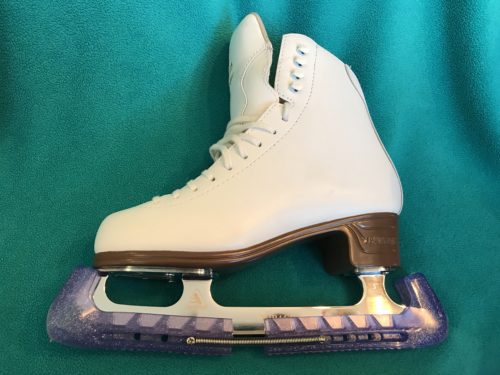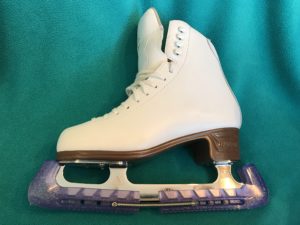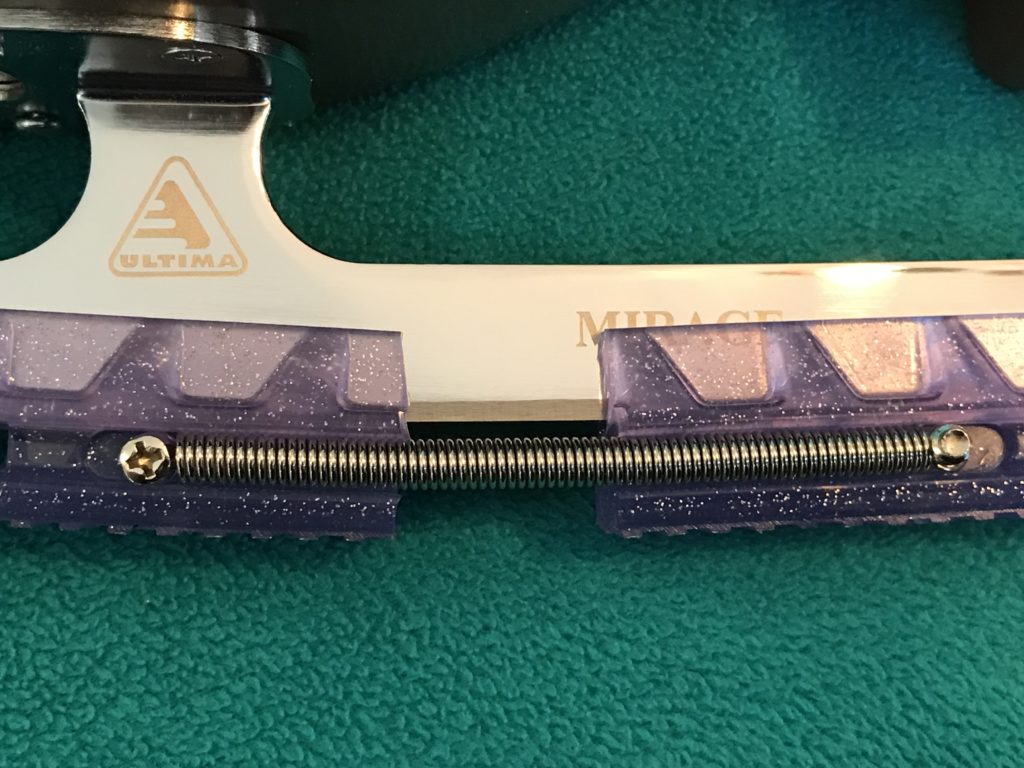Boot covers are a whimsy; arguably not a skating essential, but I’d put them in the recommended
category nonetheless.
What Are Boot Covers?
Boot covers are typically made of a stretchy lycra / spandex / polyester material and are designed to cover the entirety of the boot, from the top of the boot down to just under under the sole (wrapping underneath the foot just enough to hold the cover in place). They’re a pretty simple design, kind of like a soft bootee without a sole on it:
The top and bottom of the boot cover are elasticated so that the cover will hold in place properly:
Why Boot Covers?
Some people wear boot covers because the wide range of colors and designs available can make the ice skates look prettier or more fashionable, and that’s a very valid reason. My youngest daughter, for example, loves wearing her turquoise boot covers with her turquoise spiral skate pants because by chance, the colors match so well it makes the pants and boots merge in a pretty seamless way:
My son wears black boot covers because while most boys / men wear black skates, he has white skates (for reasons I’ll explain in another post); black boot covers normalize his skates’ appearance to the color people seem to expect.
However, the very best reason I know for wearing boot covers is to protect your investment in your ice skates. The ice skate uppers are made of leather, which can get scratched and dinged like any other shoes. Ice can be rough when you scrape your boot along it doing a lunge, for example:
When practicing crossovers, it’s easy to nick one skate with the blade of the other. Scraping against the wall at the side of the ice can damage the leather as well. Rather than try to clean and repair the surface afterwards, it’s much easier to protect it beforehand and minimize the risk of damage. For purely protective purposes, it’s very common to use white boot covers over white boots; it’s not necessary to go with funky colors and patterns if you don’t want to!
Sizing And Cost
One size fits all, they say. I disagree, but apparently I’m in a minority because most covers are at best available in Child (to fit size 1-13) and Adult sizes. Adult, in this case, seems to mean Adult Women
based on the fact that Adult in the popular Chloe Noel brand, for example, is Size 1-8
. It’s not clear what a boy or man with feet larger than size 8 is supposed to do, because most brands seem to only offer those sizes. As a guide, my 12 year old son wears an adult size 8½ skate, and his “Adult”
boot covers only just fit. I am not entirely sure what to do when his feet grow larger, but I’ll cross that bridge when I get to it.
Interestingly, when seeking larger boot covers I did find them for sale in the UK. It seems that the Spanish company Intermezzo manufactures boot covers in an XL size. Sadly I have not found a US distributor for them. Maybe I have just found a new business for myself! I plan to get hold of a pair of all three sizes that they make in the near future and I will report back on the sizing, and whether we can organize some availability in the US going forward.
If the sizing is a pain, in comparison the pricing is a joy. A pair of boot covers in the USA typically runs from ~$10 upwards, depending on brand, color, material or pattern. I’ve linked some examples below, and as ever these are not personal recommendations, just examples of the type of thing available.
For the $10 or so it costs to get a pair of boot covers, my belief is that they will pay for themselves over time, so for me they are highly recommended.
What If I Hate Boot Covers?
Not everybody likes boot covers; I get it. The only way to protect a boot is for it to be protected. Boot-covering tights may provide some protection if you wear those. Similarly I’ve seen some people use tape to protect the most vulnerable areas of the boot. I can’t speak to either of these directly, but the verbal advice I’ve had from the coaches I’ve spoken to has always been to use boot covers.
